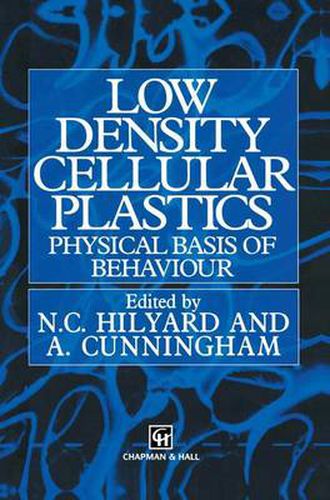Readings Newsletter
Become a Readings Member to make your shopping experience even easier.
Sign in or sign up for free!
You’re not far away from qualifying for FREE standard shipping within Australia
You’ve qualified for FREE standard shipping within Australia
The cart is loading…






This title is printed to order. This book may have been self-published. If so, we cannot guarantee the quality of the content. In the main most books will have gone through the editing process however some may not. We therefore suggest that you be aware of this before ordering this book. If in doubt check either the author or publisher’s details as we are unable to accept any returns unless they are faulty. Please contact us if you have any questions.
Density reduction of cellular materials can be directly converted into cost savings and consequently commercially produced foams are being driven towards their lowest possible density for a given application. However, as densities become even lower, the control and optimization of the cellular structure and physical properties becomes more complex and a better understanding of the fundamental relationships between composition, cellular structure, matrix morphology and the physical properties is required. To facilitate this understanding, a world-wide group of authors from industry and academia at the forefront of research have been brought together. The fundamental basis of the formation and the physical behaviour of low density cellular polymers are described and analyzed and they report, explain and quantify, using empirical data, phenomenological modelling and mathematical analysis; the current understanding of fundamental issues concerning foam formation and physical behaviour. Current model representations of physical behaviour are critically reviewed and model predictions compared with experimental data. Unlike other books on polymeric foams, which concentrate on the chemistry and process technology of foams, it focuses on the essential material science issues of the quantification and mathematical modelling of physical behaviour whether it be mechanical, pneumatic, thermal or acoustic. In addressing fundamental issues concerning the physics of low density cellular plastics, the reader’s attention is directed to the many possibilities in foam development which have potential for commercial exploitations. This book should be of interest to senior undergraduates, graduates and researchers working in the plastics field; those working in the plastics industry.
$9.00 standard shipping within Australia
FREE standard shipping within Australia for orders over $100.00
Express & International shipping calculated at checkout
This title is printed to order. This book may have been self-published. If so, we cannot guarantee the quality of the content. In the main most books will have gone through the editing process however some may not. We therefore suggest that you be aware of this before ordering this book. If in doubt check either the author or publisher’s details as we are unable to accept any returns unless they are faulty. Please contact us if you have any questions.
Density reduction of cellular materials can be directly converted into cost savings and consequently commercially produced foams are being driven towards their lowest possible density for a given application. However, as densities become even lower, the control and optimization of the cellular structure and physical properties becomes more complex and a better understanding of the fundamental relationships between composition, cellular structure, matrix morphology and the physical properties is required. To facilitate this understanding, a world-wide group of authors from industry and academia at the forefront of research have been brought together. The fundamental basis of the formation and the physical behaviour of low density cellular polymers are described and analyzed and they report, explain and quantify, using empirical data, phenomenological modelling and mathematical analysis; the current understanding of fundamental issues concerning foam formation and physical behaviour. Current model representations of physical behaviour are critically reviewed and model predictions compared with experimental data. Unlike other books on polymeric foams, which concentrate on the chemistry and process technology of foams, it focuses on the essential material science issues of the quantification and mathematical modelling of physical behaviour whether it be mechanical, pneumatic, thermal or acoustic. In addressing fundamental issues concerning the physics of low density cellular plastics, the reader’s attention is directed to the many possibilities in foam development which have potential for commercial exploitations. This book should be of interest to senior undergraduates, graduates and researchers working in the plastics field; those working in the plastics industry.